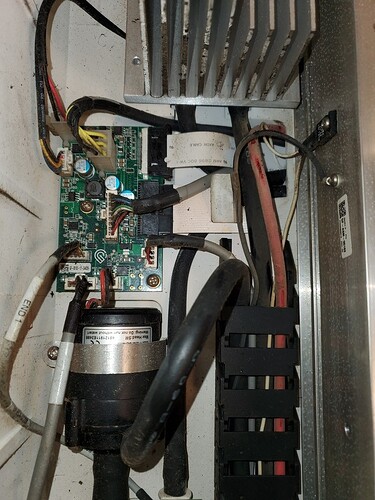Hello All,
So I wanted to start a topic about PVC…Obviously this is for beginners - I am such a beginner and almost had to learn the hard way.
I cut enough PVC vinyl to make a 15" laptop bag not knowing that PVC equated to murder on the GlowForge. Not even two weeks out of the box and my GF Pro was already down…
I could get into the details of working with GF Tech Support - but it would be unproductive and take away from the GLORY that is the rest of this post…
SO…We all know that cutting PVC with a laser creates Chlorine Gas that then mixes with the moisture in the air to create Hydrochloric Acid (HCL) - at least you should if you own a laser anything…In any case, the HCL eats away at the “exposed” circuit board…
As you can see in the Image above…This was what my Circuit Board looked like. It was like this black, slimy, gunky sludge coating the top of the circuit board and connectors. gross
It also burned the tips of my fingers, on account of the HCL.
It was also causing my GF Pro to throw the Dreaded Yellow Light upon startup. It would not move or respond, no matter what I tried. Finally, Tech Support said that the GF was having trouble communicating with the Laser Arm.
So, logically, if i was exhausting HCL over an “exposed” circuit board, the HCL would ‘eat’ or corrode the metals in the board. Corrosion = increased electrical resistance…Too much resistance and the current cannot pass…if the current cannot pass then the GF cannot communicate with the Laser Arm…Right? Right.
Solution:
Remove the corrosion to restore current flow.
Process:
Remove Circuit board
Scrub with Baking Soda Solution
* 1/4 cup Baking Soda + 2 Tbsp. Water - Mix to paste
* I used a new brush head on my Phillips Sonicare Toothbrush
- It worked perfectly with the baking soda
Synergy: scrubbed and polished circuit terminals while neutralizing the HCL
Smother circuit board in Baking Soda Paste
Let sit for 30 min in warm area to dry
Blast with warm water for 1 - 2 mins to remove baking soda
Preheat oven to 150 - 170*F
Place circuit board on folded foil (non-reflective side on the outside)
Put circuit board in oven and turn it off
Let sit in oven for 60 - 90 mins to ensure ALL moisture is removed
Reinstall circuit board
Re-connect all connectors
Cross Fingers and Pray what you just did - did not damage my GF even more…
AAAAAANNNNNNDDDDD…
We are back in business folks!!!
My GF Pro is back up and running!!! No more yellow light, no more not printing, no more feeling like crap because I just broke my brand new $$$$ Laser Printer!!!
If anyone has any questions, I am happy to explain more in detail.
It woks and I am so relieved that I do not have to send my unit back to GF or go back and fourth over a warranty exchange!
Recovery from PVC abuse is possible - It just takes a little confidence and a little gumption - but you can do it.


